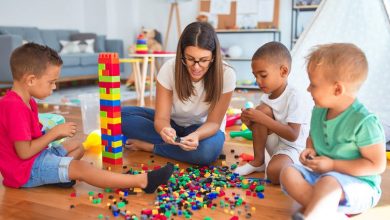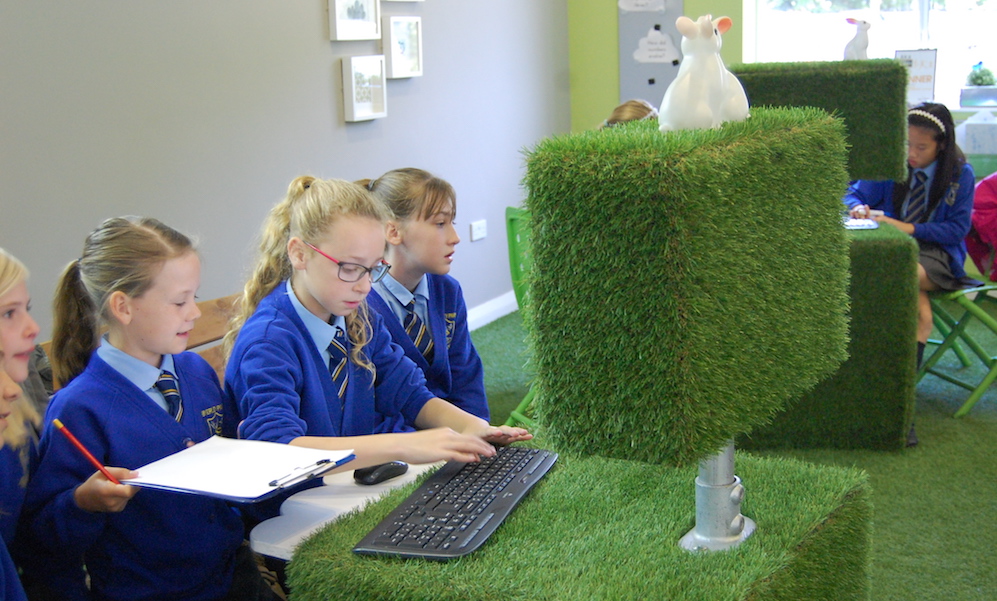Rethinking STEAM learning and teaching
Tips, tricks and the latest educational resources for effectively integrating STEAM learning into your classroom.

The integration of Science, Technology, Engineering, the Arts and Maths (STEAM) has given students the opportunity to connect ideas, knowledge, and techniques, combining them in new and interesting ways. STEAM education encourages engaging and integrated teaching, helping students to think in a future-orientated-, ‘what-if’ mindset, through innovation and problem-solving.
Read the latest issue of School News HERE
In an increasingly global world, with technology and innovation at the forefront, 21st century skills are highly valued by employers. As well as a grasp of literacy, maths and science, school leavers need the critical thinking skills to approach tasks differently, across all areas of the workplace. Social, economic and technological change is reshaping the kind of jobs available in the future; this in turn is impacting the skills required by business and industry.
Building on the early 2000s concept of STEM, STEAM includes arts education, encompassing visual and performing arts, manual arts, music, dance and more. The inclusion of arts recognises that technology alone is not enough. STEAM aims to spark students’ imagination and creativity through the arts in ways that naturally align with STEM learning. Through engagement with the arts, students can develop creativity, communication and performance skills which will benefit their education as well as future employment opportunities.
With the shift to STEAM education, there has been a corresponding shift in how the implementation of this education is viewed. Now, emphasis is placed on how the distinct disciplines work together, rather than separately. Inter-disciplinary, multi-disciplinary and cross-disciplinary courses and subjects which integrate more than one learning area are championed. Including arts in STEM learning can work to make these subjects more accessible to students who are not typically interested in these learning areas. Contextualising STEM subjects within an arts framework encourages students to think creatively and explore different problem-solving techniques.

As a field, the arts is broad and diverse, covering areas including photography, architecture, history and performance. This allows educators the opportunity to blend STEAM thinking into many subject areas in a variety of ways. The wide spectrum of arts education opportunities can help teachers integrate elements of the arts into their lessons.
Similarly, the variety of disciplines within the arts allows teachers to incorporate STEM principles into their arts classrooms. Students who struggle with principles of maths and science, or find technology daunting may be encouraged to engage with these subjects through their arts practice. Shifting the focus from science or maths, for example, in isolation and adopting an integrated approach can make concepts more accessible. Recontextualising STEM learning within an arts framework can encourage students to engage with these concepts.
STEAM has been imbedded in the Australian Curriculum, with educators increasingly encouraged to tailor learning activities which touch on more than one STEAM discipline. This can improve learning outcomes for students, with a shift away from traditional rote learning. Integration of STEAM subjects can encourage students to build on their strengths to engage with other areas of the curriculum they feel less confident with.
World Economic Forum research found that “65 per cent of children entering primary school today will ultimately end up working in completely new jobs that don’t currently exist.” The Australian Government National Career Education Strategy notes that
“Children starting preschool today will engage with a different world. They will be asked to do jobs yet to be created, use technologies yet to be invented, and face social, economic and environmental challenges yet to be anticipated.”
STEAM education aims to develop in students’ skills needed for the future, by helping them adapt to the evolving and fast-paced environment.
According to the World Economic Forum report, “workers will need to have the appropriate skills enabling them to thrive in the workplace of the future and the ability to continue to retrain throughout their lives”. Lateral thinking and transferable skills will be highly desired in the future workforce.
Through exposure to the arts, students’ cultural and social awareness is increased. This in turn can help foster an appreciation and understanding of other world views. Remaining open to alternative viewpoints and different lived experiences may encourage new approaches to problems. Shifts in social consciousness and a recognition that problems should often be viewed in a global, rather than local context make this educational exposure valuable. Today’s young people will require the ability to look beyond their own backyard, and incorporate broader contexts in their approach to tasks.
STEAM education is important for students of all ages. For ideas on how to incorporate STEAM learning into classrooms, School News spoke to some industry experts.
Street Science founder Steve Liddell said using STEAM resources is important in inspiring students. “Connecting with students and getting them to genuinely understand curriculum material is one of the biggest challenges that teachers can face. Developing lessons that incorporate hands-on learning activities is one way to inspire your students to learn.”

Hands-on learning, Mr Liddell explains, “means bringing resources and equipment into the classroom that students can engage with on a kinaesthetic level. When the sense of touch is engaged, the brain’s neurological pathways are linked, resulting in better understanding, retention, and memory.
“Hands-on learning also helps students focus, which can be particularly helpful for those students with short attention spans.”
To make learning fun, Mr Liddell recommends incorporating hands-on learning into lessons. “There is no doubt that science can be a dry subject and reading about an experiment and its results is very different to actually doing the experiment and seeing the results firsthand.
“Developing lesson plans that include hands-on activities is a great way to ensure your students are engaged and having fun whilst learning. Consider how you can contextualise these concepts for the students. When a student can relate a concept to their own lives, they are more likely to be motivated to learn about it, and more likely to retain the knowledge.
“Create a lesson plan and look for resources that are multi-sensory – visual, auditory, reading and writing, and importantly hands-on.”
Angela Perkiss from Trotec Laser said focussing on real, in the moment issues can create high levels of student engagement with STEAM subjects. “Encourage students to look for issues in their daily lives, such as developing a product that could simplify tasks for elderly relatives. If a student connects with the outcome, the inspiration will follow and hopefully have enough momentum to have the student stick with the idea. Personally, I am lucky to see the lightbulb moment that students realise their product or idea, that has been built with creative and critical thinking, actually has a measurable benefit in an industry.”
To encourage teamwork, Ms Perkiss suggests looking to the industry as an example. “In the commercial sense, product designers, procurement, marketing, fabrication all work together on a common goal. To put it simply, as a group of Year 3 students said, An Idea + an Idea = A Mega Idea.”
“Like anything in the modern digital world that is progressing quickly, software has become the new hardware. The skills required to make machinery efficient are becoming much more valuable. Naturally things like ChatGPT and Augmented Reality are great tools that can assist the learning journey going hand in hand with physically creating things to still have that hands-on and tangible experience.
“Simply look at all the boutique manufacturing happening in Australia currently and the incredible skills required to keep these types of advanced manufacturing scenarios in place for years to come, from Spacecraft and Satellites to CyberSecurity and Smart Automotive Products. The ability to critically and creatively think as well as solve problems is necessary for the future industries of Australia and beyond.”







